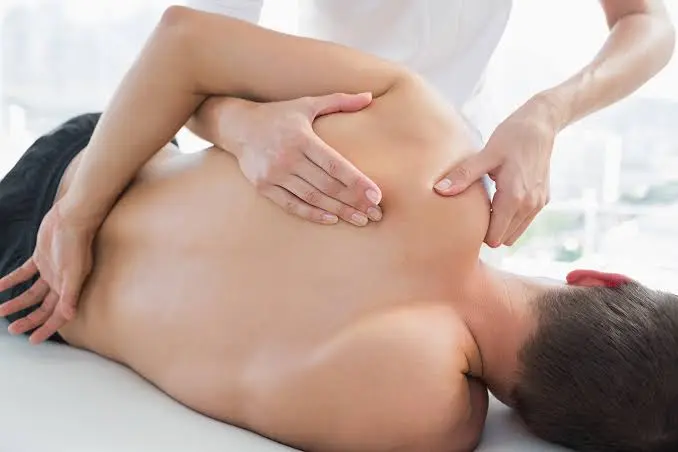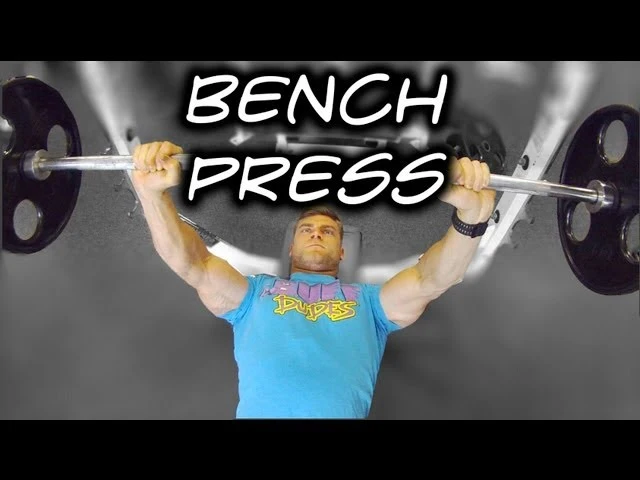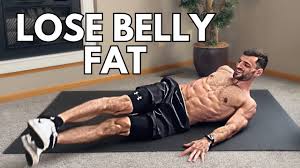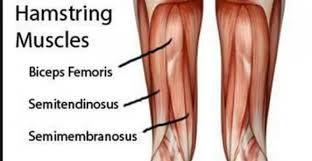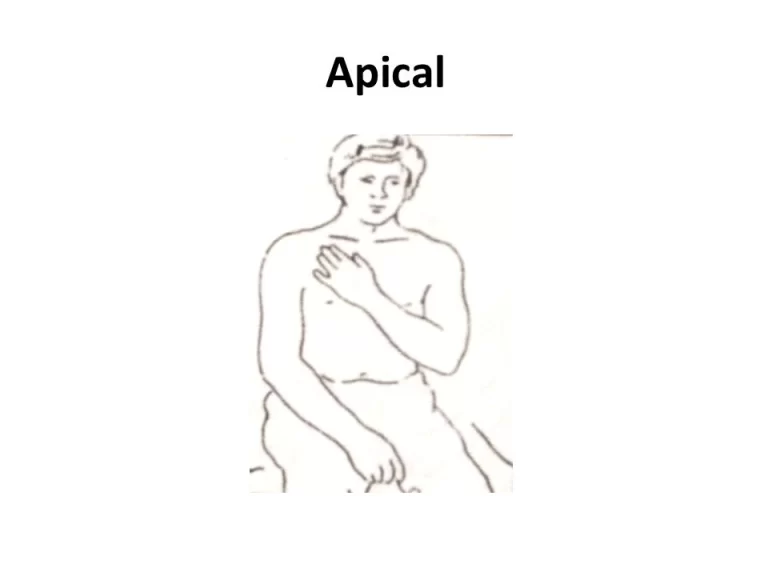Targeted Muscle Releasing Technique (TMRTs)
Table of Contents
1. Active muscle release techniques
Introduction of active muscle release techniques
The active muscle-releasing technique uses a combination of movement and manipulation to treat the soft tissues in your body. The method has been in use for almost thirty years.
To break up scar tissue, the active muscle-releasing technique involves locating, isolating, and focusing on the problematic location. This encourages blood flow and speeds up the healing of wounds. It is useful for treating issues with your:
tendons, ligaments, muscles, and nerves
Many medical professionals, such as the following, have received active muscle-releasing technique training:
- Chiropractors
- Physical therapists
- Physician
- Massage therapists
ART is useful in treating pain and additional symptoms brought on by damage or injury to:
The fascia
This is the fibrous connective tissue that surrounds and supports your body’s muscles and organs. Abrupt inflammation along a fascia tissue band can result in excruciating pain and stiffness. One prevalent fascia tissue disorder is plantar fasciitis.
Muscular group
Any of your main muscle groups may experience strains and pulls due to injuries or overuse. This comprises the hamstrings, back, and muscles in your neck and shoulders.
Ligaments and tendon
Ligaments join bone to bone, and tendon joins muscles to the bone. Pain and a reduction in range of motion can result from injury to either.
Indication of targeted muscle release techniques
- Lower back pain
- Persistent neck discomfort
- Headaches caused by tension
- Stresses in the shoulders, such as frozen shoulder
- Carpal tunnel syndrome
- Shin splints
- Sciatica pain
- Bursitis and plantar fasciitis
- Tennis elbow
Mechanism of work of active muscle release techniques
Adhesions are thick clumps of scar tissue that develop after injuries to muscles and connective tissues
dissolves these clumps. Your muscles become less flexible when scar tissue binds between them, which can lead to discomfort and stiffness in your joints and muscles.
Adhesions can occasionally trap nerves as well. By using this technique to manipulate the soft tissues, adhesions are broken up, restoring your muscles, joints, and nerves to their natural range of motion.
During a TMRT session, your healthcare provider will feel the area and identify the location of the scar tissue. Using this method, they will target and isolate the location, working on it to break up scar tissue and re-establish healthy blood flow to allow the area to heal.
The goal of active muscle release techniques
The goal of active muscle release techniques, a soft tissue approach, is to reduce tissue tension by eliminating adhesions and fibrosis that can form in tissues as a result of overload from repeated use. Muscle weakness, numbness, aching, tingling, and burning sensations can result from these illnesses.
Although the Targeted muscle-releasing technique (TMRTs) has been described as a diagnostic and therapy method, there is little scientific data on how ART affects different disorders; the majority of the data that is available is anecdotal and based on case reports.
When one needs a targeted muscle release technique
Numbness and tingling in your fingertips; acute pain in the bottom of your foot near the heel; stiffness in your neck, elbow, hands, knees, or back; increased discomfort while exercising
Restricted range of motion and decreased flexibility
Reduced power swollen joints tingling, numbness, or vulnerability
Advantages of active muscle release techniques
For those with pain and other symptoms brought on by soft tissue injuries from trauma, overuse, or sports, Targeted muscle-releasing techniques (TMRTs) provide numerous advantages.
Benefits consist of:
- Greater adaptability
- Enhanced range of motion reduced the lower back pain and subsided persistent neck pain
- Alleviation of tension headaches
- Management of shin splints and carpal tunnel
- Treatment of tennis elbow treatment of plantar fasciitis reduction of sciatica symptoms
Technique of active muscle release techniques
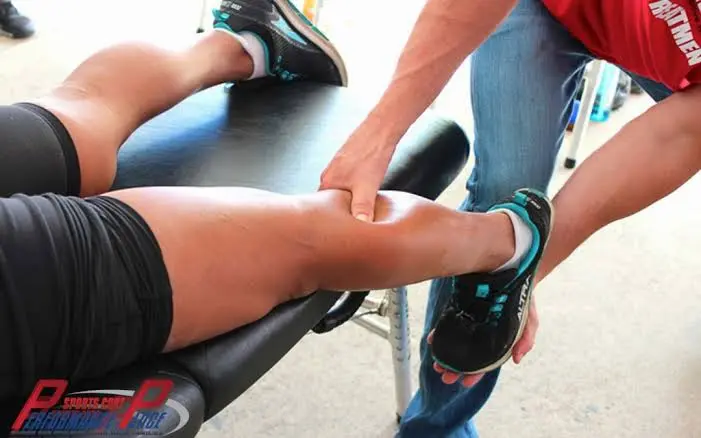
Trauma can cause tissues to change negatively, leading to fibrosis, adhesions, and edoema. In order to treat continuous pressure tension lesions, cumulative trauma injuries, and repetitive strain injuries, the clinician employs manual therapy, which applies compressive, tensile, and shear pressures. The patient is encouraged to actively shift the wounded site from a shortened to a lengthened position as the clinician administers deep tension to the sore area. Applying a contact point close to the lesion and guiding the patient’s movements such that soft tissues, such as muscles, ligaments, and nerves, slide longitudinally beneath the contact point.
Adductor strains and ART
Worked to address adductor muscle strains in ice hockey players by relieving acute pain. Despite the brief duration of the trial, pre and post-assessments showed a substantial improvement, suggesting that the Targeted muscle-releasing technique (TMRT) was successful in raising the pain pressure threshold in adductor muscle pain sensitivity.
Hamstring flexibility and ART
After receiving ART, the 20 participants showed a significant increase in flexibility; nevertheless, the small group sample consisted mainly of young, healthy guys, which limits the general population’s ability to use the results. Furthermore, the study was just temporary.
Carpal tunnel syndrome and ART
5 participants with a diagnosis of carpal tunnel syndrome had the impact of ART on their median nerve evaluated. After two weeks of treatment, there was an improvement in both the severity of the symptoms and the functional status. This short clinical pilot study may indicate that ART is a useful treatment plan for those suffering from carpal tunnel syndrome.
Targeted muscle releasing technique (TMRTs) and strength and inhibition of the quadriceps
The nine athletes who experienced anterior knee pain did not see an increase in quadriceps strength or a decrease in inhibition when using ART.
Post-treatment exercises
Post-treatment exercises become an integral element of the rehabilitation process to guarantee the absence of recurrence of symptoms once the restricting adhesions between tissues have been removed.
Any workout programme should focus on these four essential areas:
Flexibility
The ability to move across the full range of motion is a prerequisite for healthy muscles and joints. An increased risk of injury to muscles, tendons, and ligaments is associated with poor flexibility. A person’s range of motion can be restricted in one joint while being exceptional in another. This is because flexibility is joint-specific. Stretching exercises work best when they are performed after the soft tissue adhesions have been removed. Only the tissues above and below the limitations will be stretched by stretching activities performed before the adhesions are removed. There is rarely any stretching of the real adherent and constricted tissues, which results in additional biomechanical abnormalities.
Strength
Following treatment, strengthening activities are most beneficial. Efforts to enhance muscles that are shortened and contracted could lead to additional contraction and limitation. This exacerbates the cycle of repeated injuries by leading to the creation of further adhesions and limitations inside the tissues. Because of this, using general or non-specific strengthening activities to treat RSI is rarely effective.
Proprioception
refers to the body’s capacity to respond to outside stimuli appropriately (via touch and balance). Exercises involving proprioception should start early in the healing process. The goal of effective proprioception exercises is to help the patient regain their kinaesthetic awareness. These workouts provide the foundation for the strength, endurance, and agility needed for full recovery.
Cardiovascular
Aerobic or cardiovascular exercises are crucial for improving soft tissue oxygen transport and re-establishing healthy circulation. Repetitive strain injuries are mostly accelerated by low oxygen and poor circulation.
What one should expect after treatment
Your injury or condition will be assessed by a licensed active muscle-releasing technique practitioner. They determine this by evaluating your movement and feeling the afflicted area. Changes in skin texture, adhesions, muscle knots, decreased range of motion, and swelling are all things they search for during the evaluation.
Following an evaluation of the problem and confirmation that an active muscle-releasing technique is necessary, your practitioner will start treating you. Practitioners stretch the afflicted body part while applying firm pressure to tender areas. As they continue to apply deep pressure on the adhesion, they may perform passive stretches and ask you to move.
More than 500 precise movements are used in ART to break free of adhesions and scar tissue. The number of sessions required will depend on how severe your condition is. Perhaps just one treatment is required. Perhaps just one treatment is required. However, most patients experience relief after three to six sessions spread over two to four weeks.
Remember that during treatment you may experience some soreness. However, speak up if it starts to hurt too much. There shouldn’t be any severe or acute pain. You might also experience aches and pains following treatment that resemble sore muscles after working out.
2. Myofascial release
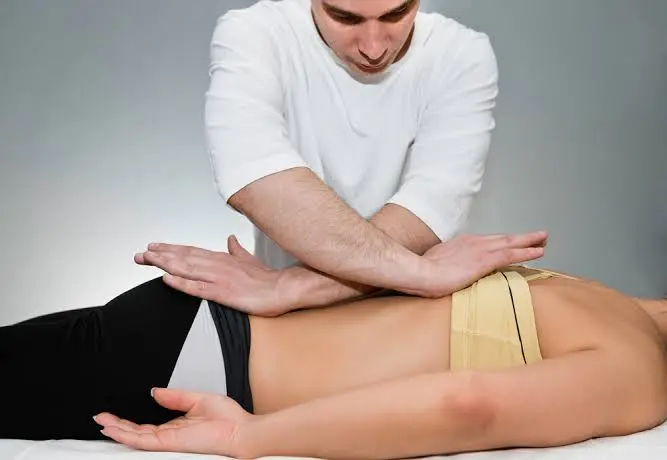
One form of physical therapy that is frequently used to treat myofascial pain syndrome is myofascial release. A chronic pain condition called myofascial pain syndrome is brought on by sensitivity and tightness in your myofascial tissues. Your body’s muscles are supported and encircled by these tissues. Typically, “trigger points”—specific locations within your myofascial tissues—are where the pain starts.
By releasing the tension and tightness in the trigger points, myofascial release aims to lessen pain. Knowing which trigger point is causing the pain is not always simple. It’s quite challenging to pinpoint a particular trigger point for pain. Because of this, myofascial release is frequently applied across a large region of muscle and tissue as opposed to specific points.
Indication of Myofascial release
Anyone who has tightness in their fascial tissues may benefit from myofascial release therapy. Those who have undergone myofascial release therapy may benefit from having:
- Physical trauma
- Injuries sustained in falls, auto collisions, or whiplash.
- Scarring
- As a result of burns, surgeries, or illnesses like frozen shoulder.
- Osteoarthritis, plantar fasciitis, bursitis, and other conditions can cause inflammation.
- Compressed nerves
- Compressed nerves resulting from carpal tunnel syndrome or herniated discs.
- Repetitive stress injuries
- Repetitive stress injuries are caused by bad posture or heavy lifting.
Numerous illnesses can be treated with myofascial release therapy. Among these prerequisites are:
Myofascial pain syndrome
This condition results in pain in the connective tissues of your body.
Carpal tunnel syndrome
This disorder affects your hands and wrists, causing pain, numbness, and weakness.
Low back pain
Strain to the back’s muscles and tendons results in low back pain. Your spine’s range of motion and flexibility are reduced as a result.
Disorder of the temporomandibular joint (TMJ)
TMJ is brought on by inflammation of the muscles surrounding the jaw joints.
Fibromyalgia
This chronic illness that lasts for a long time causes pain in the muscles and joints.
Migraines
Frequent throbbing headaches are the result of chronic migraines.
Mechanism of action Myofascial release
The majority of myofascial release procedures happen in the course of a massage treatment. It might also be provided by some traditional medical professionals and chiropractors.
In addition to lightly massaging the myofascia, your therapist will feel for any tight or stiff spots. Elastic and malleable myofascia should be the norm. The therapist will start applying light manual pressure while stretching and massaging the stiff areas. Subsequently, the therapist assists the tissue and supportive sheath in releasing tension and pressure. The procedure is carried out repeatedly on both the same and different trigger points until the therapist determines that all of the tension has been released.
It’s possible that the massage therapist is not working in the same location as the pain or that the pain is not where it hurts the most. Your pain may be coming from a wider network of muscles that myofascial release targets. By releasing trigger points throughout a large portion of your muscular system, it attempts to ease tension throughout your entire body.
The Procedure of Myofascial Release
You will work with a healthcare professional who has received training in myofascial release therapy during your sessions.
Perhaps your supplier is,
- Physiotherapist.
- Occupational Therapist.
- A masseuse.
- A chiropractor.
- specialist in sports medicine.
- trainer for athletes.
- Osteopathic medical professional.
Your provider’s office will have a private room designated for your sessions. The fascial tissues that feel tight and stiff throughout your body will be the first area your healthcare provider locates. These regions are frequently referred to as knots or trigger points. They will consistently and gently press these areas after locating the knots.
Your skin will be in direct contact with your provider. They refuse to apply lotions or oils. They must be able to sense your fascia’s tightness. We’ll gradually apply pressure in an effort to expand the length of your fascia. Your healthcare provider will repeatedly stretch and knead your fascial tissues. They will let go as soon as they sense the pressure and tension subside.
If headaches, tightness in the neck, and pain are becoming too much for you, myofascial release may be of assistance. A few easy myofascial release techniques will allow you to relieve tension in your own home.
For neck pain that radiates down one side:
Trace the path of pain along the back of your head and neck using your thumb or fingers.
Work your way down slowly at first, then more and more until the pain subsides. Some physios tell us to apply mild to moderate pressure and drag the thumb down to the area of pain
Regarding neck pain, you can identify:
Press down with your hands on the sore spot.
Pressing should be done for approximately sixty seconds.
Move your neck in a clockwise manner.
Additionally, try these shoulder pain relief techniques if you’ve been bearing the weight of the world on your shoulders and could use some relief:
Regarding pain that radiates down your arm from your shoulder:
Apply pressure to the painful area with your thumb. Some physios advise applying moderate pressure and dragging the thumb down the area of pain.
Five or six times over, repeat.
Regarding shoulder pain, you can identify:
Using both hands, firmly grasp your shoulder.
Put pressure on the area with your thumb. Some physios advise applying modest pressure to the sore tissue. Wait ten to fifteen seconds.
Myofascial release isn’t a sport with competition. That isn’t about how much pain you are in; you have nothing to prove to anyone. Before you faint, you are able to stand. Start with something like a tennis ball and use it to gently roll out your muscles or apply pressure to tight spots rather than going all out with the strongest tool you can find.
Post Myofacial release procedure
You might experience soreness in the areas that your provider stretched during myofascial release treatment. However, the pain should subside quite quickly. In those areas, you ought to feel much more at ease than you did previously.
To reap the most benefits, you must visit your provider on a regular basis. Every one to three days, they might suggest treatments. There will be 15 to 50 minutes in each session. It might be advised by your provider that you attend sessions again for a few weeks or months. The severity and underlying cause of your ailment will determine this.
Other treatments with Myofacial release
Myofascial therapy has the potential to both precede and enhance other forms of treatment. In addition to myofascial therapy, patients may benefit from other nonsurgical pain management techniques that maintain warm, pliable muscles and joints. Among them are:
Taking over-the-counter analgesics like ibuprofen or acetaminophen
Using ice to reduce swelling or applying heat to relax tense muscles
Engaging in aerobic exercise to improve blood flow to the afflicted areas or self-stretching exercises to preserve flexibility and range of motion.
In order to improve the efficacy of other treatments like acupuncture, manipulation, physical therapy, or occupational therapy, myofascial therapy can also be used in conjunction with them. Prior to surgery, myofascial release therapy can also help athletes achieve better skeletal and muscular alignment. Myofascial therapy has the potential to both precede and enhance other forms of treatment. In addition to myofascial therapy, patients may benefit from other nonsurgical pain management techniques that maintain warm, pliable muscles and joints. Among them are:
Taking over-the-counter analgesics like ibuprofen or acetaminophen
Using ice to reduce swelling or applying heat to relax tense muscles
Engaging in aerobic exercise to improve blood flow to the afflicted areas or self-stretching exercises to preserve flexibility and range of motion.
In order to improve the efficacy of other treatments like acupuncture, manipulation, physical therapy, or occupational therapy, myofascial therapy can also be used in conjunction with them. Prior to surgery, myofascial release therapy can also help athletes achieve better skeletal and muscular alignment.
Benefits of Myofascial Release
Both myofascial release therapy and other forms of massage therapy. However, myofascial release therapy offers a host of possible advantages. These advantages could consist of:
Pain management: Your tissues may begin to heal and soreness may subside.
Improved range of motion: Your muscles and joints may be able to move more freely.
Better circulation: Your body may circulate blood and oxygen more effectively.
Massage therapy has been demonstrated to aid in relaxation and the release of knots in the body.
Stress management: You could feel a release of tension all over your body.
Complications of Myofascial Release
What Dangers Does Myofascial Release Involve?
Massage therapy’s myofascial release carries very little risk. Massage therapy may help reduce pain whether your goal is to relieve back pain or simply unwind.
But massage isn’t the best for everyone:
With painful wounds, burns, fractures, or broken bones; weak or fragile bones; deep vein thrombosis; or problems with deep veins using drugs that thin the blood Rarely, receiving massage therapy may result in internal haemorrhage
Momentary paralysis or trouble coordinating your movements
Temporary paralysis Having difficulty using your muscles. damage to nerves. Speak with your healthcare provider if any of the following conditions apply to you. They might advise staying away from myofascial release therapy or attempting an alternative form of treatment. Bone fractures
Allergy resulting in nerve damage from oils, gels, or lotions
Hemorrhage inside
Burns
Open injuries
Stroke in the deep veins. situations where blood thinners are necessary. Metabolic circumstances
3. Massage with deep tissue
Like a deep tissue massage, ART mixes pressure and active movement.
Strains and sports injuries are among the musculoskeletal problems that deep tissue massage is primarily used to treat. It involves targeting the inner layers of your muscles and connective tissues with slow, deep strokes to apply continuous pressure. This aids in releasing tension from muscles and tissue and breaks up scar tissue that develops after an injury.
By lowering inflammation and boosting blood flow, it might also encourage quicker healing.
Benefits of Massage with deep tissue
The benefits of deep tissue massage are both mental and physical. Deep tissue massage helps relieve muscle pain and reduce stiffness, in contrast to other massage techniques that emphasize relaxation. However, it can also aid in mental relaxation.
Additionally, people have stated that deep tissue massage is beneficial for:
- Sports-related injuries
- Fibromyalgia
- High blood pressure
- Plantar fasciitis
- Tennis elbow
- Sciatica
Side effects of Massage with deep tissue
It’s common to experience some soreness that lasts a few days after receiving deep tissue massage. To relieve pain, try using a heating pad or a towel-wrapped cold pack.
While massage therapy is generally considered safe, certain people may not be able to tolerate the intense pressure used in deep tissue massage.
Before receiving a deep tissue massage, consult your physician if you:
are taking blood thinners and have a history of blood clots or clotting disorders
have a bleeding disorder or are receiving treatment for cancer, including radiation or chemotherapy
Deep tissue massage vs Swedish massage
Your unique needs will determine whether you choose deep tissue or Swedish (or traditional Swedish) massage. The softer strokes of the Swedish massage will provide you with the ultimate in relaxation.
If you are experiencing chronic muscle tension and knots in your body, a deep-tissue massage will be more beneficial.
Light, long strokes are used in Swedish massage to release surface tension and increase muscle circulation.
Swedish and deep tissue massage techniques may be used, but the therapist will use more force when applying the techniques.
This level of intensity aids in the release of tension in the fascia, or connective tissues, which lie beneath the muscles and in the deeper layers of muscle.
Pressure
The level of pressure used by the massage therapist varies depending on the type of massage.
Swedish massage uses long, gentle firm pressure strokes. Although this style usually offers a more soothing experience, some people may find the pressure to be too great.
Deep tissue massage, on the other hand, uses far more force to release tension from the muscles and fascia at a deep level. It might be overpowering relaxing muscles.
Goaled application
The intended purposes of the various massage types also differ.
A common massage for relaxation is the Swedish massage. Stress and mild to moderate muscle tension can be effectively relieved by light-to-moderate pressure. It has the power to revitalize someone.
Deep tissue massage is primarily used to relieve chronic muscle strains and release deep muscle tension. The therapist has to exert more pressure in order to accomplish this, which may be uncomfortable. Deep tissue massage is therefore usually not recommended for relaxation or stress relief.
The procedure of Swedish massage
Long, flowing strokes are used in Swedish massage along with friction and kneading to relieve surface tension.
The five fundamental strokes of Swedish massage serve as the foundation for numerous other forms of massage therapy. The fundamental five strokes are:
Effleurage: Long, soft, rhythmic strokes across the skin are used in this type of massage. In addition to being incredibly soothing, these strokes enable the massage therapist to sense the overall tone of the muscles and pinpoint any trouble spots that require attention.
Friction: When hands or fingers rub against the body, friction strokes—which are quick, short strokes—create heat.
4. Manipulation
To enhance alignment and posture, this kind of therapy uses deep tissue stretching and manipulation.
Any manual mobilization of a joint or muscle can be referred to as manipulation; however, physiotherapists use a more precise definition. Physiotherapists refer to the small amplitude, a high-velocity joint mobilization that produces a “crack” sound as manipulation. The commonly accepted theory regarding “the crack” states that joint pressure decreases as joint surfaces are pulled apart. The synovial fluid inside the joint experiences some cavitation as a result of the decreased pressure. The release of nitrogen bubbles is accompanied by the sound of a “crack.” This model is the acknowledged explanation for the sound, and it has been replicated in joint models.
5. The Garston Method
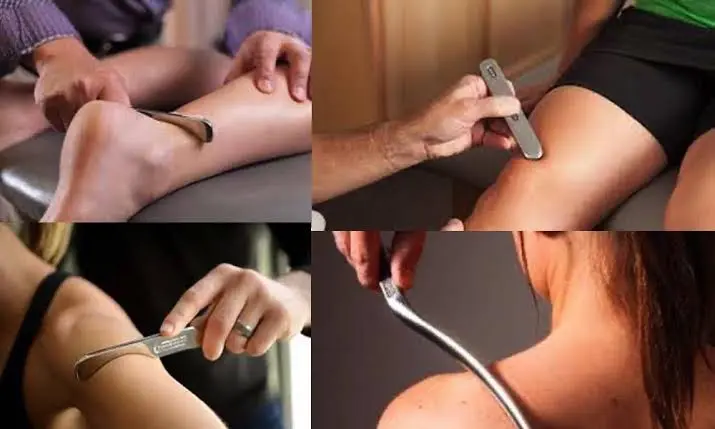
This patented method bears a striking resemblance to ART. In addition to improving blood flow and targeting adhesions, it mobilizes tissue using portable instruments.
The procedure of The Garston Method
There are two ways that specially-made Garston tools are used by specially-trained clinicians:
first to find any restrictions or knots in the muscles. In order to find any fibrous or scar tissue that might be hurting you or limiting your movement, they run the instruments over your skin.
Second, in order to regain mobility and function, they break up that tissue with the tools.
Using the Graston Technique has the following advantages:
Benefits of The Garston Method
Alleviation of pain
Reduced muscle spasms Less restrictions on movement in fibrous tissue Greater mobility in soft tissue
Improved blood flow to the tissues
Increased adaptability
Risk factors of The Garston Method
The Graston Technique carries the following risks:
Bruises on the skin where the procedure was done
Not offering relief
Redness on the skin where the procedure was done
When scar tissue separates from healthy tissue, it spontaneously releases connective tissue.
Increased discomfort
Indication of The Garston Method
The Graston Technique is useful not only for carpal tunnel syndrome but also for the following conditions:
sprains of the ankle, knee, or wrist ligaments
any muscle in the body can experience myofascial pain
Additional musculoskeletal abnormalities, like trigger finger Plantar or rotator cuff injuries
6. Counterstain-Strain
The method locates the pain points and applies passive pressure for a duration ranging from ninety seconds to three minutes. It relieves pain and stiffness and aids in soft tissue relaxation.
7. Enhanced Soft Tissue Mobilisation, or ESTYM
A unique plastic tool is used in this technique to help break down scar tissue and encourage better function of the muscles and joints. Scar tissues restrict the range of motion, muscle tension, and flexibility. It lowers inflammation and is a tried-and-true method of treating tendinitis and bursitis.
8. By hand traction
In order to extend the spine and release pressure from the lumbar discs, manual traction involves applying pressure for a brief period of time. Back pain can be effectively treated with this therapy.
9. Interaction friction
The soft tissues found in the muscles, tendons, and ligaments are kept mobile by this manual therapy. It also stops scars from forming. Using this technique, the therapists massage the affected area deeply both locally and obliquely. In order to speed up the healing process, cross-friction therapy regenerates connective tissues and lessens pain.
10. Therapy using trigger points
Chronic muscle pain and immobility are treated with soft tissue manual therapy. The goal of the therapy is to relieve the pain areas of their tightness and tension. Deep tissue work is a type of massage that is used in it.
Introduction of Trigger points
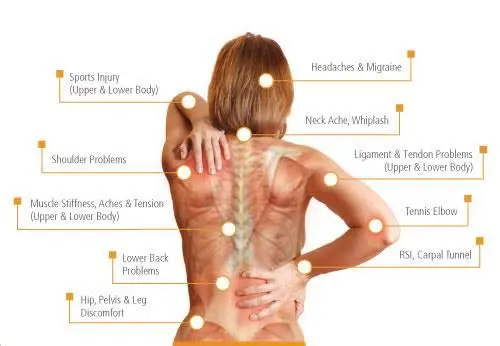
Under your skin, trigger points feel like tiny knots or marbles. Many people experience no pain or discomfort when applying pressure to trigger points. Trigger points can become extremely sensitive at times, and some people experience severe pain in the areas where they are located.
Have you ever experienced a muscle “Charlie horse”? If so, you are familiar with the sensation of having every muscle in your body go into excruciating spasms, with gentle muscle elongation and stretching appearing to be the only thing that helps. Consider trigger points to be little Charlie horses located in your muscles. Only a very tiny portion of that muscle spasms as a result of these bothersome spots. But if your trigger points are numerous enough, you might begin to feel more pain.
Types of trigger points therapy
Trigger points come in two varieties: active and passive.
Simply put, passive trigger points hurt where they are. When someone applies pressure to a painful muscle knot in your hamstring, the pain will be felt directly at the site of the pressure.
An active trigger point is a site of pain that radiates to another body part. Should someone apply pressure to an active trigger point in your shoulder, you might experience symptoms in your arm or chest in addition to shoulder pain.
Physical therapy may be helpful for managing your trigger point issue, regardless of the type you have.
Location of trigger points therapy
Anywhere in your body can develop muscle knots and trigger points. There may be a tiny area of tissue tension anywhere there is muscle tissue. 1 This might be the starting point. Trigger points are more frequently found in the following body areas:
- Your neck’s upper trapezius muscles, which are located just above your shoulders on either side,
- Your lower back’s quadratus lumborum muscles
- The muscles in your hamstrings
- Your muscles in your calves
- Along the band of your iliotibial
Anywhere in your body can develop trigger points, and if they happen frequently, you could develop myofascial pain syndrome and chronic pain.
Mechanism of trigger point therapy
Your trigger points will be applied and held under pressure by a physical therapist during trigger point therapy. This causes a brief interruption in the tissue’s blood flow, which causes the tissue’s nitric oxide levels to rise. Nitric oxide helps break up the trigger point and stop the pain-spasm-pain cycle by telling your body to open up microcapillaries, which are incredibly tiny blood vessels.
Myofascial release is an additional technique that might be beneficial for your trigger points and muscle knots.4 A form of massage called myofascial release is intended to assist in correctly aligning the fascia that surrounds your muscles. This may enhance blood flow and restore your muscles’ natural range of motion.
The procedure of trigger point therapy
Manual trigger point therapy
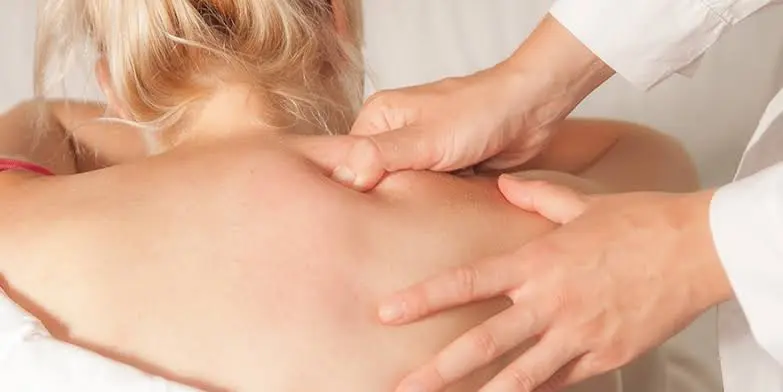
typically means using pressure to the trigger point continuously until it releases. Apply pressure to the nodule until the pressure begins to release if it is located within the taut band of tissue. This could take a few minutes or even 30 seconds. It might take several sessions to relieve this pain if the trigger point is truly chronic. To aid in the release of the trigger point, you can try this with a ball. This technique also referred to as ischemic pressure, works by diverting blood flow, which is then released, causing the blood to surge back in and replenish the area with all of the fresh nutrients.
Myofascial Dry Needling
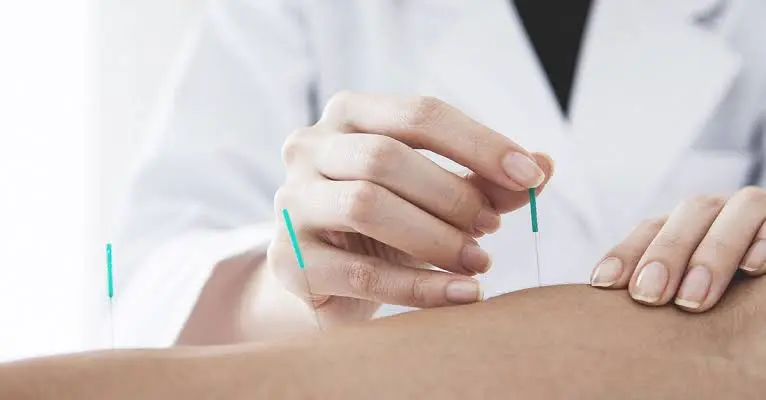
This technique for trigger point release is becoming more and more popular. To cause a muscle to twitch, an acupuncture needle is inserted into the muscle’s trigger point. The body can “let go” of this contraction of muscle tissue by using the needle to twitch the muscle, causing it to contract and relax. Additionally, after treatment, dry needling aids in the nervous system’s desensitization to pain, allowing you to experience little to no pain. Additionally, dry needling promotes increased blood flow to the muscle, which draws more nutrients to the area.
Self trigger therapy
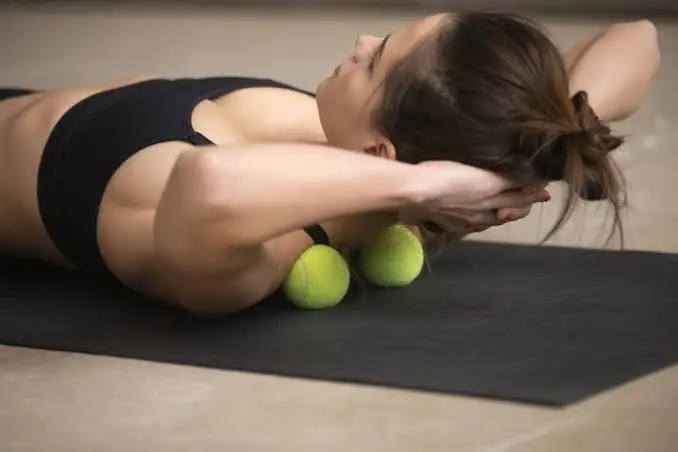
Acquiring the ability to self-manage your condition is one of the best things you can do for your trigger points. Using trigger point techniques for self-massage may be part of this. They could consist of:
Applying pressure to your trigger points with a Back-Nobber
swiping a tennis ball and applying pressure to your trigger points
Your muscles can benefit from foam rolling to help smooth out fascial tissue.
According to research, there isn’t just one effective way to treat muscle knots. There’s no doubt about it: active postural correction and exercise programmes are better for trigger points than passive ones. See your physical therapist for a comprehensive assessment of your situation and to find out about self-care techniques for handling trigger points.
11. Neuro Kinetic Rehabilitation
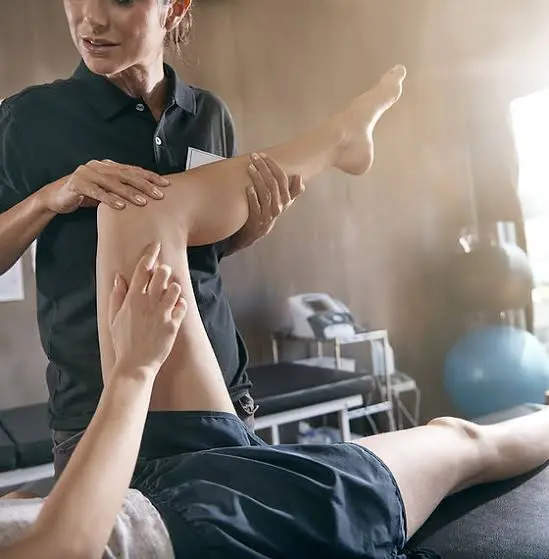
This corrective protocol identifies failures through a series of muscle tests, which are subsequently adjusted for. It accomplishes this by altering the motor control center’s programming, which controls the area of your brain in charge of coordinating the movements of your body.
Indications of Neuro Kinetic Rehabilitation,
Ottawa residents who experience recurrent pain might want to inquire about neurokinetic therapy. The goal of this kind of therapy is to assist in regaining the body’s mobility and balance. Although it is still relatively new, this kind of therapy is gaining popularity fast. First, educate yourself on the fundamentals to see if it’s a good fit for you.
This kind of therapy is organic and frequently referred to be an effective healing approach. The goal is to relieve both acute and chronic muscle pain and tightness by targeting the motor control centre of the brain. According to David Weinstock, one of the main founders, it’s a therapy that is rapid and economical for the long-term rehabilitation of specific injuries.
You might see improvements with this technique in terms of improving your athletic performance, avoiding more injuries, and correcting bad posture or misalignment. In contrast to many medical interventions, NKT addresses the root cause of the dysfunctional movement rather than just its symptoms. It treats the brain’s dysfunctional movement patterns to heal any pain, discomfort, and compensatory mechanisms. It also helps to get movement back to normal.
Chiropractors in Ottawa frequently employ this therapy along with other forms of massage as a therapeutic bodywork modality. It is becoming more widely used to treat injuries and chronic pain in a variety of rehabilitative settings. It is an extremely focused and accurate method that can pinpoint the problematic muscle.
NKT is being used by people all over the world to treat a variety of common conditions, including carpal tunnel syndrome and different running injuries. These issues are frequently exacerbated by dysfunctional muscle compensations, which make it harder for you to carry out daily chores and your favourite hobbies. Numerous things can cause muscle compensation, including trauma, poor form during exercise, and compensation while lifting objects or performing daily tasks.
Indications of Neuro Kinetic Rehabilitation,
Neurokinetic therapy may be advantageous for individuals of all ages. This encompasses both sedentary and highly active individuals. Several ailments and injuries can be treated with this therapy as part of a regimen, including:
- Trauma or impact injuries, including those from auto accidents
- Pain in the jaw and neck, such as from whiplash or TMJ
- Carpal tunnel syndrome
- Plantar fasciitis
- Pain from exercising incorrectly
- Low back pain
- Fibromyalgia
- Strains
- Pulls, and tears in the body’s muscles and other soft tissues
- Tendinitis and bursitis
Advantages of Neuro Kinetic Rehabilitation
There are several advantages to employing this therapy. It can ease the pain and tension brought on by overworked muscles. Patterns of compensation may arise from overuse. It is typical after a trauma to protect the injured area while it heals. Compensatory patterns also arise from this, which NKT can address by retraining the muscles following their healing.
NKT is a tool that athletes can use to help them improve their performance and correct poor form and inefficiency. For instance, a runner who uses compensation patterns increases their risk of developing heel spurs, plantar fasciitis, pre-arthritic pain, and mechanical hip pain. Athletes who use NKT can lower their risk of activity-related injuries in addition to:
Reduced muscle spasms; enhanced strength, endurance, and range of motion; improved posture, balance, and coordination; and accelerated muscle recovery
Method of Neuro Kinetic Rehabilitation
A series of actions begin when a muscle is damaged. The pain and other symptoms that frequently accompany muscle injuries can result from these occurrences. The sequence of events involves an inflammatory response characterized by the appearance of cytosolic enzymes in the serum, free radical damage, and phagocytosis within the damaged muscle sarcomeres. In order for both you and the practitioner to be certain that the source of your problems is addressed, this technique looks for the injured muscle.
This therapy is regarded as an evaluation tool in addition to a rehabilitative method. The practitioner works to test your muscles during the first sessions. This is significant because your physician must use localized muscle testing to identify the specific underlying muscle functions causing your discomfort.
Manual muscle testing, also known as therapy localization, is used to assess muscle strength. A very specific protocol must be followed in order to determine which body part is causing the pain or injury. The problematic muscle relationship is often the case. This is due to the fact that inhibiting one muscle makes the opposing or corresponding muscle work harder.
It can be challenging to distinguish between a muscle that is truly strong and one that is merely acting strong to compensate for a weak muscle during the testing phase. They will test the muscle they believe is weak and causing the problems first, and then they will test the muscle they believe is strong.
Deep tissue release is applied after the appropriate muscle has been located. This method uses firm pressure and slow strokes to reach the deeper layers of muscle and fascia. There are basically two methods:
Determining the exact, localized region where compensation is occurring is the main objective of testing. The practitioner will then be able to release the tight muscle, reset the weak muscle, and rewire the connection between the two muscles.
Deep tissue release is applied after the appropriate muscle has been located. This method uses firm pressure and slow strokes to reach the deeper layers of muscle and fascia. There are basically two methods:
Friction
By exerting pressure across a muscle’s grain, friction helps realign muscle fibres and release adhesions.
Stripping
This method glides and applies deep pressure with the elbow, knuckles, forearm, or thumbs along the length of a muscle fibre.
This is frequently used for injuries and illnesses of the muscles. It is among the most widely used complementary methods for treating neck, osteoarthritis, and low back pain. It also is advantageous for Suboccipital Headaches and relaxation
12. Cupping therapy
Introduction of cupping
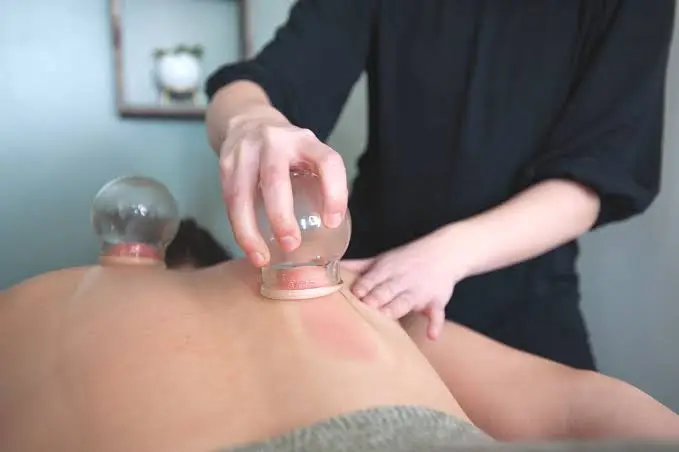
A therapist applies special types of cups to your skin for a few minutes in order to form suction during cupping therapy, an ancient type of alternative physiotherapy. People receive it for a variety of reasons, such as deep-tissue massage or to help with pain, inflammation, blood flow, relaxation, and overall well-being.
The cups could be composed of:
Bamboo, Glass, Earthenware
Silicone Variety
Indications of cupping
- Rheumatoid arthritis is one type of arthritis.
- Shoulder, knee, back, and neck pain.
- Breathing problems, including asthma.
- Carpal tunnel syndrome.
- Disorders of the digestive system, such as irritable bowel disease (IBD).
- migraines and headaches.
- Elevated blood pressure, or hypertension.
Contraindications of cupping
You should not get cupping therapy if you are going to give baby birth because the effects of cupping on pregnancy are still largely unknown to people. Also, you ought to refrain from cupping if you have:
- Anaemia.
- Pacemaker.
- bleeding conditions such as haemophilia.
- Issues with blood knots, such as a history of strokes or deep vein thrombosis (DVT).
- Heart-related conditions.
- Skin disorders, such as psoriasis and eczema.
- Epilepsy-related seizures.
Cupping therapy is not for everyone, despite the decreased risk of complications. Before attempting cupping or any other alternative medical therapy, consult your physician for other details.
Types of cupping
There are various cupping techniques, such as:
Dry
Your therapist will light a cup filled with combustible material—such as paper, alcohol, or herbs—during either type of cupping. They put the cup upside to down on your skin as the fire goes out.
There is a vacuum created in the cup as the air inside cools. Your skin rises and becomes redder as a result of your blood vessels expanding. Usually, the cup is left in place for a maximum of three minutes.
A more recent variation of cupping creates the vacuum inside the cup using a rubber pump rather than fire. Therapists occasionally apply silicone cups, which they can move around your skin to simulate a massage.
Wet
Wet cupping involves leaving a cup in place for roughly three minutes, which produces a mild suction. After removing the cup, the therapist lightly inclines tiny cuts across your skin with a tiny scalpel. They then perform a 2nd suction to extract a small amount of blood from the body.
In your first session, you might receive three to five cups. Or you could simply give one a shot and see how it goes.
To stop infection, you might then receive a bandage and antibiotic ointment. In ten days, your skin should look normal again.
Supporters of cupping therapy believe that by drawing toxins and dangerous substances out of the body, wet cupping can aid in healing. However, that is unproven.
Additionally, some receive “needle cupping,” in which a therapist applies cups over the patient’s acupuncture needles after they have been inserted.
Mechanism of cupping
Cupping reduces discomfort and illness symptoms. The therapy has not been the subject of much research.
The liquid is drawn into the treated area by suction from cupping. The small blood vessels under your skin, known as capillaries, it may enlarge and rupture due to this suction of force. Your body promotes appropriate and normal healing at the cellular level and restores healthier blood flow to the cupped areas. Many people believe that cupping releases many toxins because of this effect.
Techniques of cupping
There are various techniques for cupping. The following steps differ slightly based on the approach that is selected. These cups will be left in place for a few minutes by the provider. In certain treatments, the area is stretched and massaged by briefly moving the cups.
Among the techniques for cupping are:
Dry
The interior of each cup is heated by your provider. The conventional technique entails lighting a cotton ball soaked in alcohol on fire. The hover is caused by the heat forcing oxygen out of the cup. A more contemporary method involves emptying the cups of air using a suction device. Your skin is drawn upside into the cup by the vacuum force of it.
Running
It’s comparable to dry cupping. However, your healthcare professional will apply oil or lotion to your skin before starting. After setting the cups, they will carefully move Over the afflicted area of your body, moving them in various directions.
Bleeding
Before applying the cups, your healthcare provider lightly punctures your skin with a needle. This makes it true for the suctioned blood which is trapped in the cup to release toxins substances.
Multiple cups may be applied to your skin by your provider, depending on the treatment. Providers typically use three to five cups, but they occasionally use seven. Receiving more than 7 cups in one treatment is not usual.
Benefits of cupping
The evidence supporting the efficacy of cupping is conflicting. Experts list various potential advantages of cupping. Actually, a mix of those factors could lead to cupping’s success.
As an illustration, cupping therapy may:
- Motivate complete body ease and tranquility.
- Raise your threshold for pain.
- lessen the inflammatory response.
- Improve the flow of blood.
- Take out the toxins in your body.
- Lower low-density lipoprotein (LDL) and cholesterol levels.
- Aid in the prevention of heart conditions like atherosclerosis.
- RBC counts should rise.
- Your peripheral nerve system should be stimulated.
The majority of medical professionals advise cupping as a complementary medicine procedure. Put another way, you should not use it as a stand-alone procedure, but rather in conjunction with conventional Western medicine.
Complication of cupping
Going to a qualified healthcare provider is the best way to ensure that cupping is safe. However, the following adverse effects could occur when the cups come into contact with your skin:
- slight discomfort
- Tears Cuts
- skin infection
Bloodborne infections like hepatitis B and C can spread if cups and other equipment get contaminated with blood and are not properly sterilized between patients.
FAQs
It’s best to do stretches or muscle releases every day.
Sessions of therapy last roughly fifteen minutes.
Acute and chronic MPS are the two main categories for MPS. Acute MPS patients experience discomfort in one or two localized areas. Usually, excessive activities or traumatic experiences trigger the onset of symptoms. Most symptoms go away in a matter of weeks.
Anyone who experiences tension in their fascial tissues may benefit from myofascial release therapy.
Your discomfort may be coming from a wider network of muscles that myofascial release targets.
References
- Activereleasetechniques. (n.d.). Physiopedia. https://www.physio-pedia.com/Active_Release_Techniques
- Santos-Longhurst, A. (2018, May 15). Active release technique uses and benefits. Healthline. https://www.healthline.com/health/active-release-technique#similar-treatments
- GoodRX – error. (n.d.). https://www.goodrx.com/conditions/musculoskeletal/active-release-technique
- Top 5 Active Release Technique Benefits & Uses – Dr. Axe. (2023, May 4). Dr. Axe. https://draxe.com/health/active-release-technique/
- Rees, M. (2022, October 21). What is active release therapy, and does it work? https://www.medicalnewstoday.com/articles/active-release-therapy
- Holland, K. (2016, December 17). What is myofascial release and does it work? Healthline. https://www.healthline.com/health/chronic-pain/myofascial-release#risks
- Professional, C. C. M. (n.d.-h). Myofascial release therapy. Cleveland Clinic. https://my.clevelandclinic.org/health/treatments/24011-myofascial-release-therapy#procedure-details
- Schneider, K. (2023, January 20). Myofascial release: How it helps Relieve pain. Cleveland Clinic. https://health.clevelandclinic.org/how-your-body-can-benefit-from-myofascial-release/
- Santos-Longhurst, A. (2023, May 4). Is a deep tissue massage what your muscles need? Healthline. https://www.healthline.com/health/deep-tissue-massage#what-to-expect
- Johnson, J. (2019, November 13). Swedish massage vs. deep tissue massage: What’s the difference? https://www.medicalnewstoday.com/articles/326983#summary
- PhysioTattva. (n.d.). Soft tissue mobilization Physiotherapy| Physiotattva|. https://www.physiotattva.com/therapies/soft-tissue-mobilization-therapy
- Admin. (2022, January 25). What is the Graston Technique? Cary Orthopaedics. https://www.caryortho.com/what-is-the-graston-technique/
- Luke, G. (2020, August 16). What is Trigger Point Therapy? muscletherapy. https://www.muscletherapyaustralia.com.au/single-post-c18co/what-is-trigger-point-therapy
- What exactly is neurokinetic therapy? Can it help you? (2022, September 21). Kent Chiro-Med Physiotherapy & Chiropractic Clinic. https://www.kentchiromed.com/educational/what-is-neurokinetic-therapy/
- Ansorge, R. (2012, August 27). Cupping therapy. WebMD. https://www.webmd.com/balance/cupping-therapy
- Professional, C. C. M. (n.d.-g). Cupping therapy. Cleveland Clinic. https://my.clevelandclinic.org/health/treatments/16554-cupping

